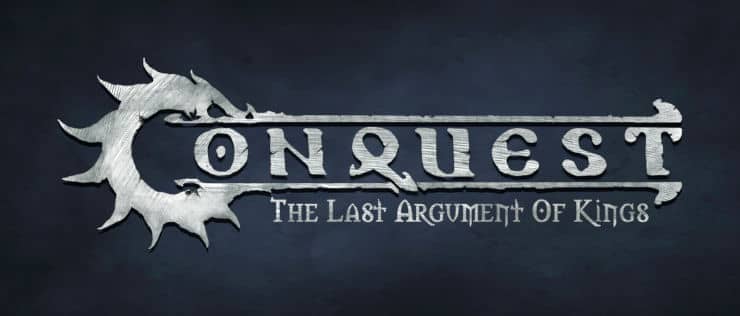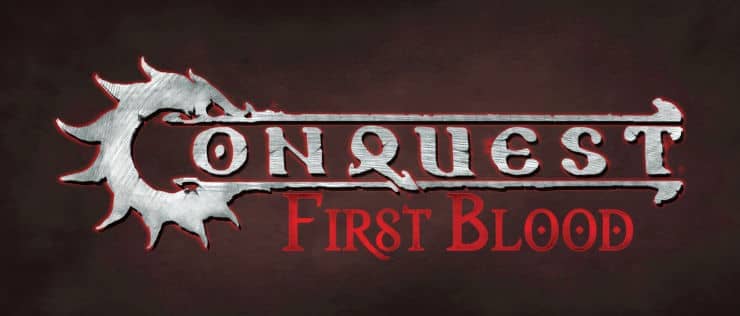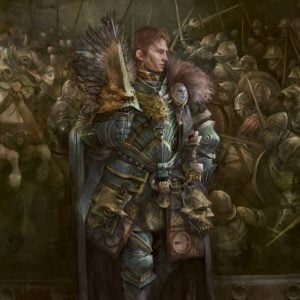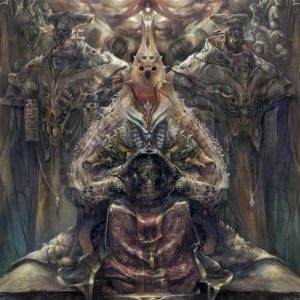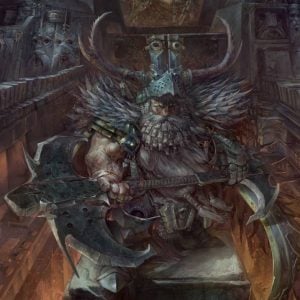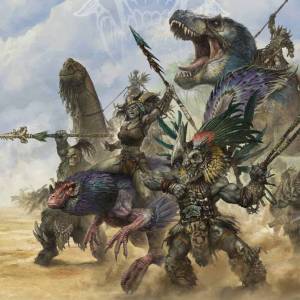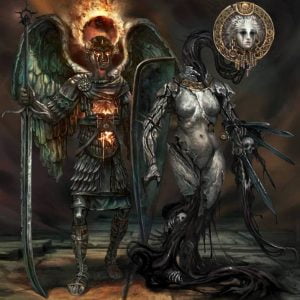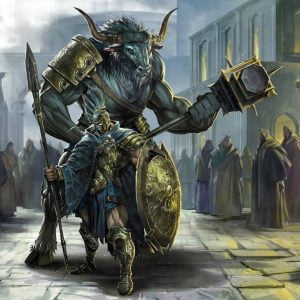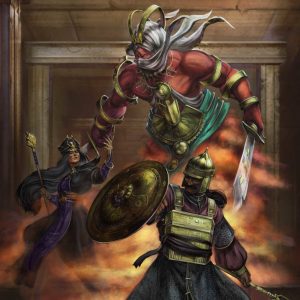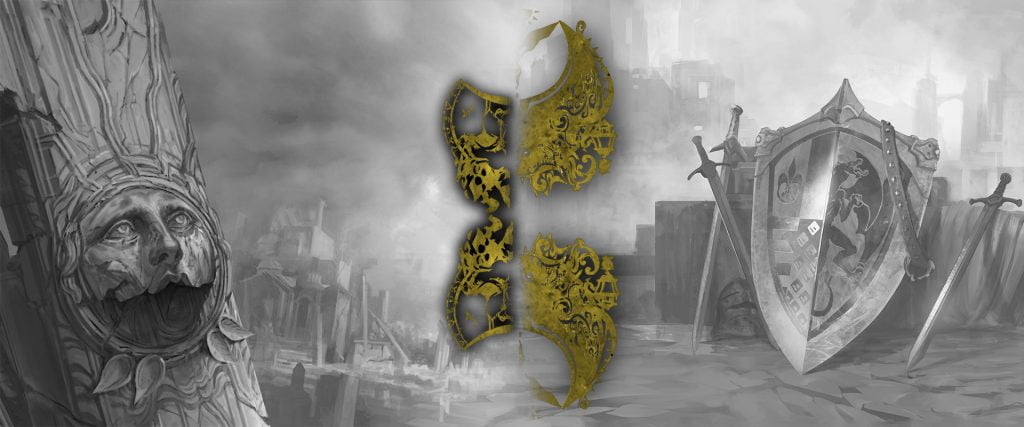
Primordial Patterns
by Benjamin Tok and A.R.
Chapter 3: Old Faith and New Faiths
[…]
Already during the centuries of chaos which preceded Hazlia’s Fall, many were those who spoke of the sin of man. With the Old Dominion being a pure and undisputed theocracy, the political crisis that was spawned by Hazlia’s absence after the Last Crusade was, by extension, also a crisis of faith. Coupled with the continuous declarations of Holy Wars, this not only caused fragmentation of the Dominion’s society, but also allowed for ideas which deviated from the established dogma to flourish. Whether the motives were spiritual or political, in order to challenge the hierarchy one had to question the faith itself. This was one of the many reasons for which the Legions were forbidden from practicing any form of official worship – a mandate that was loosely enforced at best, as military appointments fell on the upper echelons of the Theocracy.
The ideas behind these emerging heterodoxies were many and differed vastly at that point, often driven more by circumstance than by a wish to reach a new Truth. All the same, an understandable pattern could be discerned: the Allfather’s absence could only mean the failure of man and this, of course, not only included but mainly referred to holders of high offices in the hierarchy of the theocracy, including the Caelesors. Already at that time, some much more timid voices spoke of the failure of God instead, but those were usually quickly silenced. The citizens of the Old Dominion were, after all, a god-fearing people.
Thus, while a great majority of the refugees that left the Old Dominion were trying to escape the chaos and violence that threatened their lives or had destroyed their properties, many were those that simply had to leave, hunted by the theocracy for their heretical suggestions. As the lines between state, religion and army were blurred for so long, especially during the Galtonni wave, many were the officers of the disbanded legions, ranging from legati and strategoi to centurions and legionnaires, that had to escape prosecution for their beliefs. One must remember, however, that by that time most of the people had never witnessed the glory of Hazlia and his Pantheon as their ancestors had. Their perception of religion lay closer to mismanagement and violence than it did to guidance, protection and inspiration. The deconstruction of their society would lead many to challenge the authority of religion over their lives. Thus, among the populations of the refugee groups, most, once faithful, minds were questioning their beliefs, while the words of the few fervent preachers were largely ignored at first, if not silenced by force. No one, after all, wished to hear that they were responsible for their misfortunes, simply because they did not believe enough.
Eventually, however, some of those preachers evolved to fill more traditional duties of priests almost by necessity, as people would turn to them for practical matters of a ritualistic nature, like the performance of ceremonies such as weddings or funerals. In time, and as the desperation of their situation and the fear of the unknown would grow, the refugees would turn to these preachers for spiritual guidance and support. By that time, the two common messages those zealous speakers delivered were simple: “the hierocracy has guided us astray from god and we, having chosen to escape their decadence, must repent for following them.” From these early preachers among the refugees, the first Apostles of the Theist Church would later be drawn, while many a faithful soldier who safeguarded their group from the perils of the journey would be elevated to Sainthood posthumously.
Once the Bounty was reached, such preachers would come to roam the settlements, performing the same ritualistic duties that they had during the long journey west. In an attempt to elevate their own prestige but also to provide some sense of stability, some leaders would invite them to stay in their courts permanently and the first timid connections to nobility began to be forged. In the Second Assembly of nobles, priests were brought along or sometimes invited so long as they were also leaders of groups. If there were something the Assembly revealed, however, it was two things. The first was that the ghost of a divine mandate behind leadership still lingered in the memories of the Dominion’s refugees and, while that memory was probably bitter and distrustful, the connection was there. The greatest revelation, however, that the priests got from the Assembly was that as individuals they had very little influence and for the first time discussions were taking place about the meaning of the Fall. However, since many of them were too attached to their own ideas and the previous dogma of the Theocracy, it would take a new generation of preachers for those discussions to bear fruit. By the mid-first century after the Fall, these preachers would show some signs of cooperation; efforts were made to amass faithful congregations and their teachings displayed much greater similarities than those of their predecessors, concentrating on a central message of mankind’s failure in the eyes of god. At the same time, they displayed an increasing attachment to the seats of power, with priests frequently found in courts as representatives of their flocks.
The arrival of the Orders saw those efforts thwarted. As much as the Orders originally shied away from any settlement’s inner politics, their involvement always came with a stipulation concerning the absence of priests and worship from the councils of administration. Shunned by the seats of power, the preachers turned to the public for support in a much more coordinated manner. In their campaign, they spoke of one god, for whom the name Theos spread fast. In their hubris, the corrupt leadership of mankind tried to elevate themselves to the Heavens, attempting to replicate the divine power of miracles. The instrument of their blasphemy was magic, an unnatural condition manifesting in souls that are not attuned to the divine balance of Theos. To shield mankind from its own profanity, Theos’ own Champion cast Himself down from heaven, destroying the blasphemers. It was that sacrifice which mankind had to honor, this crime which demanded penance, this hubris for which humanity had to atone.
While this early obsession with magic would in time be forced to the sidelines of the Theist Faith, at the time fear and hate towards magic spread and scattered witch burnings occurred, but the Orders swiftly and aggressively put an end to such practices as well as to many of their instigators. From the perspective of the Orders, however, the very fact that they had to intervene underlined that the influence of these preachers and their teachings proved much more widespread and influential than they had thought until then, while their own initial, violent reaction alienated many. At a later time, a new response to this rising faith was offered.
Heralded by one Rosmun Ludhus, a new, sidelined paradigm began spreading during the ninth decade P.R.: it was never mankind that Fell, it was only an aspect of God for divinity itself is not infallible. Deus, who was above perception, could not be put in one form or be worshipped in one manner. The betterment of each of the faithful was a duty to the divine for He was part of everything, and the people were part of him. He was to be approached by each in their own way, worshipping the Aspect, the fraction of the absolute existence which is god, which is closest to one’s own understanding, and strive for perfection in that aspect. This faith, which was stripped of heavy ritualism and moved far from the perception of a few chosen and concentrated more on each person’s connection to the divine, would in time resonate to the common people.
With the above in mind, two questions can be asked. Considering the theosophical debates that consumed the Old Dominion during the centuries of the Fall, can it really seem so surprising that the Anointed, each expressing entirely different aspects and time periods of Hazlia’s worship, do not coexist in harmony but rather war and bicker about the Will of their god? As an extension of that question, and considering the repetition of this pattern, one could possibly even argue that such debates are indeed part of Hazlia’s worship, that the God himself is ever changing or, at least, pulled by worship in so many different directions.
At the same time, however, considering the roots of modern Theism, was the appearance of Deism and their fragmenting dogma such an unforeseeable event, or could it mirror the patterns of the past? Are humanity and divinity alike bound to repeat past mistakes? In many ways, while not worshipping Hazlia, the Theist Church is the distant spiritual successor of the Old Dominion’s Theocracy, with its earliest teachings and its ritualism heavily influenced by the old worship practices. With that in mind, Deism could be seen as a planned and channeled avenue for the fragmentation that worshiping an absolute had historically led to. Based on that, many see the intellect of the Orders behind the Deist movement and point to their tolerance towards Rosmun and his followers. Indeed, there are many indications that the Orders would not only allow the early Deists to preach freely, but also supported and provided escorts as they moved from one settlement to the next.
While the generally accepted motive behind this support was political in its nature, with the Orders trying to stifle the newly fledged Church, one must not dismiss a greater purpose: distancing humanity from even the most remote aspects of Hazlia worship. Perhaps unsurprisingly, in the end it was in the Skeptics that the Orders truly pledged their allegiance. Born out of the mistrust towards the Divine caused by the Fall, the Skeptics doubted not simply the need for religion, but the very absolute nature of the divine. According to them, gods were entities of an elevated power, rather than superior existences of an entirely different nature than the rest of the universe. Therefore, by default, worshipping them served them alone; never the worshipper.
[…]

